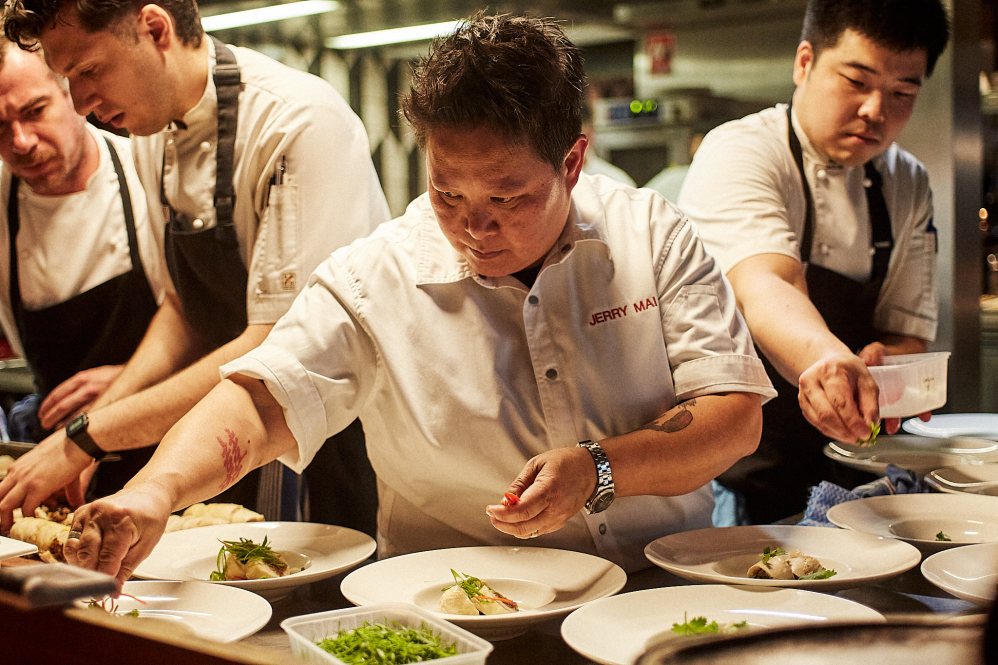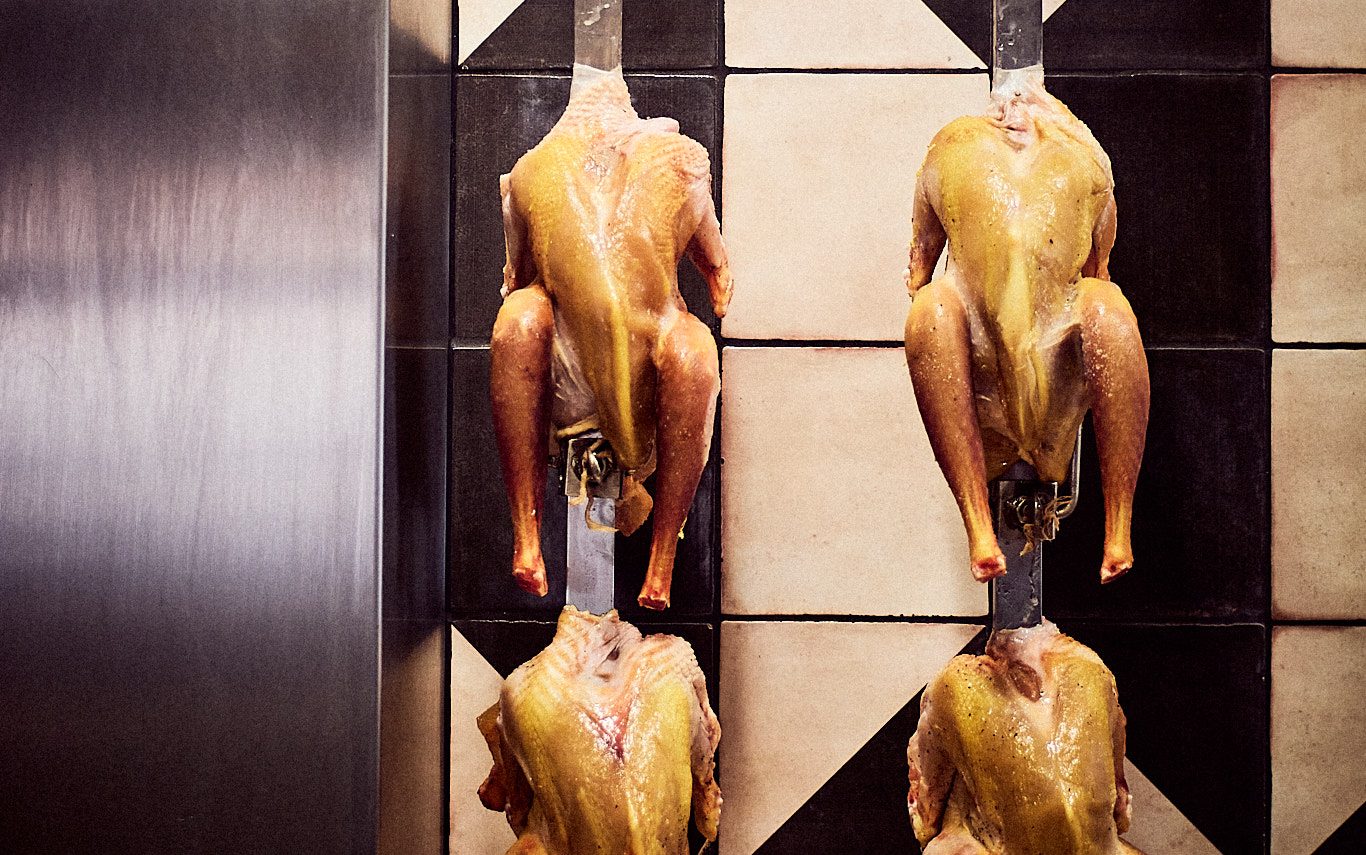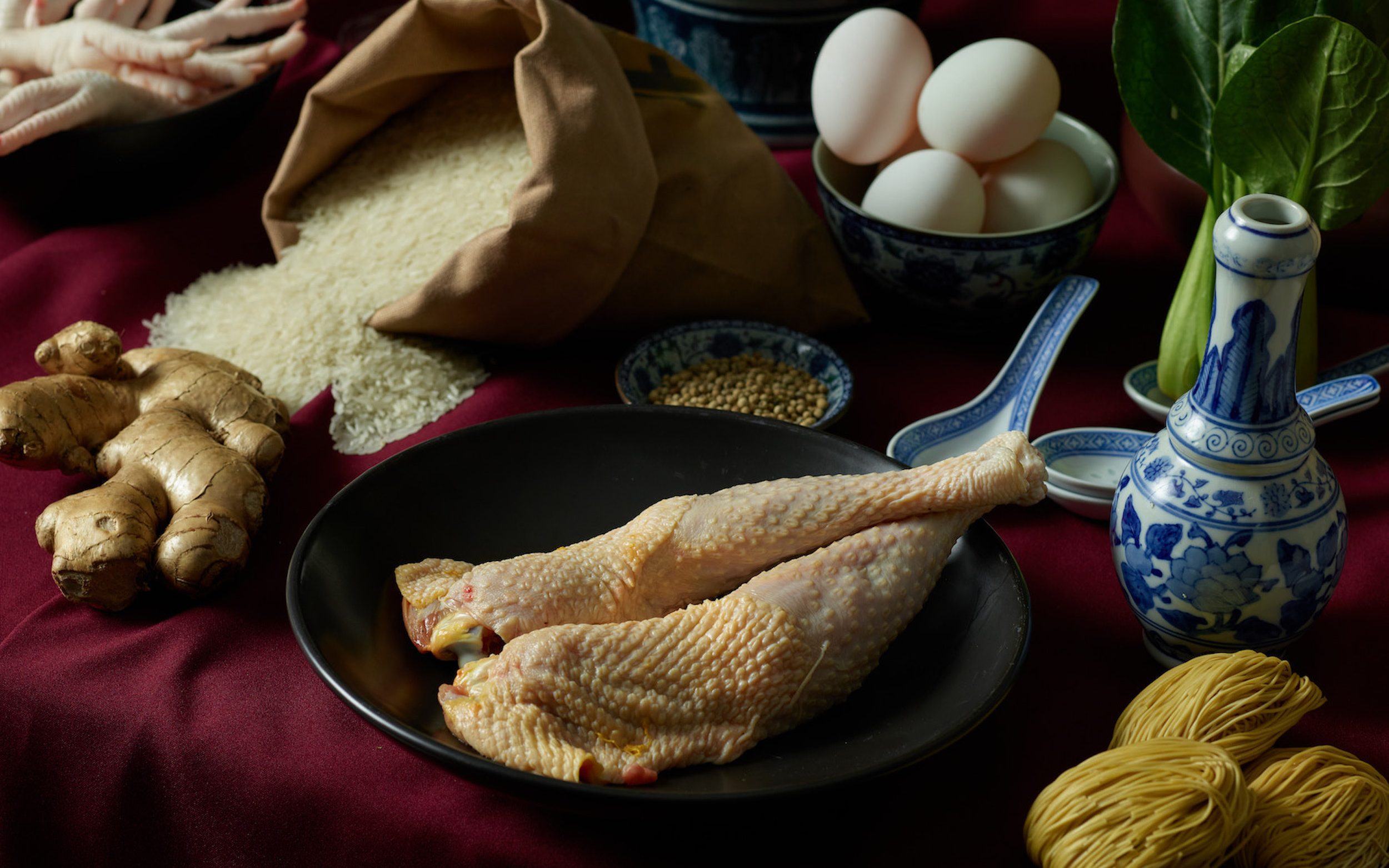Chicken, duck, quail, and turkey are likely the first birds that come to mind when you think of poultry in the Western world. But cockerel has long been an integral protein across Asian cuisines and is the focal point of foundational dishes that see the golden bird poached, steamed, and curried.
It’s difficult to draw comparisons between chicken and cockerel. For one, the flesh is marigold in colour and firm; almost al dente. As for the flavour, many chefs have compared it to the chicken they grew up eating in Japan, the countryside of France, and Italy.
In the poultry world, a considerable amount of time is required to farm cockerels compared to standard broiler chickens, which is part of the reason why the bird is not as accessible or widely consumed as its mainstream counterpart. The other cause is linked to education and awareness — but it’s starting to change.
Hospitality speaks to Pho Nom Chef Jerry Mai about her experiences with cockerel growing up and Aurum Poultry Co.’s Henning Skallebaek and Kenneth Chan about the history of the cockerel, the realities of farming, and its growing presence at restaurants.
Aurum is a Victorian-based poultry company that works with boutique farms to supply chicken, cockerel, duck, and game birds reared according to low-density practices. Farms are located across the state from Gippsland and the Mornington Peninsula to Colac, Golden Plains, Rockbank, and Werribee.
The cockerel is part of Aurum’s range and is a specialty bird that’s not easily farmed. Cockerels necessitate patience and consistency — two words that aren’t synonymous with the meat industry. “There’s not many cases of growing cockerel successfully around the world because it takes a lot of time,” says Kenneth Chan. “Farming cockerel is less economical, and it takes years to find a farming approach to grow the chicken.”
“But it’s easier than a meat chicken because there are less birds in the shed,” adds Henning Skallebaek. “They grow for a longer time but they’re a lot easier to work with — until they get more active when they get closer to sexual maturity. Once they mature, you get a tough bird, so it’s about getting the balance right. We’ve been doing this for 13 years now and we’re still learning and improving the product.”

To compare, a broiler chicken weighs 3kg by the time it is six weeks old. Cockerels weigh around 2kg by the time they’ve reached maturity, which takes between 15 and 16 weeks. The process begins with day-old pullet hatchlings that are technically categorised as a byproduct. The chicks are placed in a shed heated to 32 degrees Celsius for one week before the temperature is steadily reduced until the birds no longer require temperature intervention.
“The farmer will check on the birds up to three times a day to observe the conditions in the shed and monitor behaviour,” says Skallebaek. “The chicks are weighed every week, which is a way of keeping track of how the birds are performing.”
Shed conditions play a pivotal role in the final product, with most cockerels raised in traditional barns. Water and feed are placed near the birds to ensure they don’t
need to walk far to eat and drink, and the temperature and amount of light in the barn is also regulated by farmers.
“Airflow is very important to keep the litter dry,” says Skallebaek. “If it gets wet, the air in the shed will be impacted and that will impact the optimum growth of the bird. You don’t want too much light in there as the cockerel is a more aggressive bird and it will move around too much. Farmers can control the temperature in some of the sheds down to 1 degree.”
The feed consumed by cockerels is different to what broiler chickens eat. Aurum’s cockerels are given feed that’s been tailored according to its lifespan. “Our birds eat three times more compared to a normal chicken,” says Skallebaek. “The cockerel isn’t a meat bird, and it hasn’t been genetically developed to use all the protein and energy in normal feed, so ours has a bit less. We also add natural products such as marigold which helps the bird develop that beautiful yellow colour.”

The growth phase of a cockerel is almost three times longer than a broiler chickens, and the end result is a very different protein. The bird is distinguished by its yellow
skin and firm flesh, which is achieved through feed and its growth cycle.
“The meat texture is bouncier, and the main reason is because the chicken has more space to move around,” says Chan. “It’s not as technologically advanced and it has that gai flavour, which is from slow farming.
When we taste chicken in Asia, we always say, ‘What is the gai flavour?’ to categorise it like you would with red wine and tannins. Every time we present cockerel to chefs, they say it reminds them of their home country. A chef from Yakikami said it’s like the chicken they use in Japan and another from Il Bacaro said it reminded him of the chicken he grew up eating in Tuscany.”
Cockerel is an integral ingredient in Asian cookery, with Aurum referring to it as Fook Wong chicken which translates to happiness. “In Chinese culture, chicken is always a centrepiece dish for gatherings with family and friends, especially during Lunar New Year,” says Chan.
It’s the key ingredient in Hainanese chicken rice and steamed ginger chicken, as well as the classic French dish coq au vin. Pho Nom Chef Jerri Mai grew up eating cockerel, with her parents sourcing birds from farms and preparing them at home. “I grew up in Springvale and cockerel was quite available, but outside of Vietnamese and Asian communities, they were quite hard to find,” she says. “Cockerel was something you didn’t really eat, but it’s always been on our table and available in the Asian community.”

Mai says it all comes down to education and experience — the reality is most Australian consumers know and only eat broiler chickens. Cockerel is not a common find on menus outside of Asian and classic French settings, which means the more chefs use it, the more the public will understand the protein and its characteristics. “It’s a great product — the flesh is firmer, and the bones create depth of flavour and more sweetness whether you’re using it in a soup, steaming it, or stir frying it,” says Mai.
The chef preferences steaming as the top cooking method when it comes to cockerel, with the meat teamed with dipping sauces, soy, or salt and pepper. “The way my mum prepares it is steaming or poaching with spring onion and garlic, so you get to taste the full flavour of cockerel,” says Mai. “You steam it for 35–40 minutes and the skin becomes taut. I also have it with Vietnamese curry which is rich with coconut cream and has just a little bit of curry powder, so it’s quite gentle.”
The main thing to remember is that there’s not many limits when it comes to culinary applications, which span from using the bird in soups and broths to being braised in a wine-rich sauce or roasted. “It’s an all-rounder product,” says Mai. “When I cook stock, it’s quite sweet from the bones. The golden fat under the skin renders out really well and adds depth of flavour. People just need to understand how to handle it. It would be good for people to buy it and give it a go.”
While Mai hasn’t featured cockerel on the menu just yet, there are some pop-ups in the works that will include dishes with cockerel. “I haven’t run cockerel before just because of not being able to get it and not knowing the suppliers, but I’ve always wanted to educate people on cockerel, so I will be focusing on it at my next events.”
Aurum has noticed an uptick in demand for the bird, but it’s a matter of availability given its slower growth cycle. “We have never been out there pushing it because we struggle to have enough,” says Skallebaek. “There’s also a price point because they cost more to produce, but we’re seeing more interest from modern Asian restaurants and top-end Western restaurants that are starting to pick it up. We want people to experience real chicken.”
Sponsored Content

Discover Dairy Farmers’ range of shredded cheese
Sponsored by Bega

Beachfront Melbourne Club catering & restaurant opportunity
Sponsored by Future Food
Trending Now
Resources
Lorem ipsum dolor sit amet, consectetur adipiscing elit. Fusce ac ornare lectus. Sed bibendum lobortis...
Lorem ipsum dolor sit amet, consectetur adipiscing elit. Fusce ac ornare lectus. Sed bibendum lobortis...
Sign up for our newsletter
